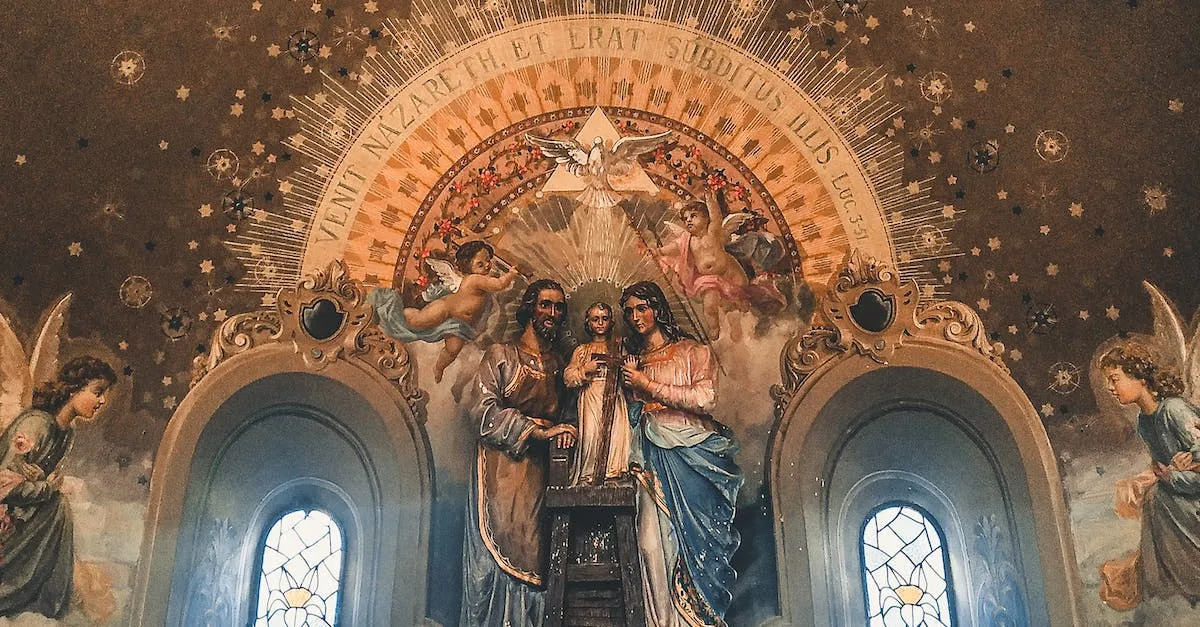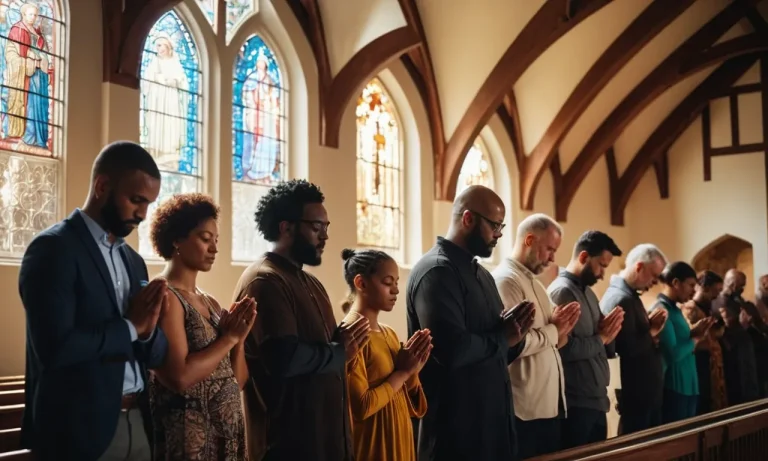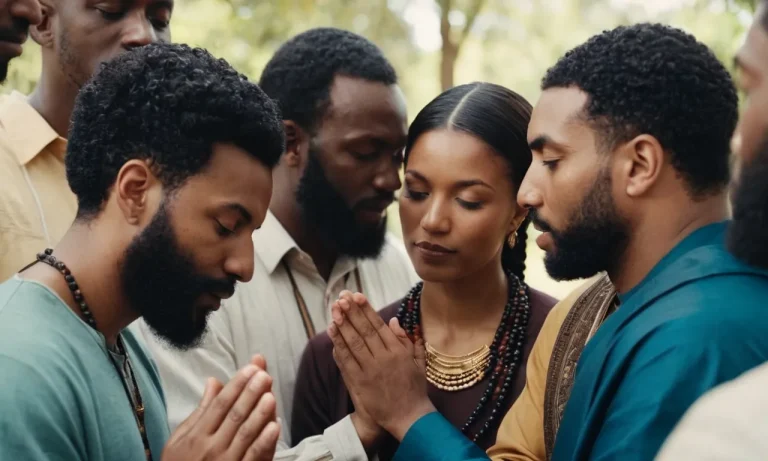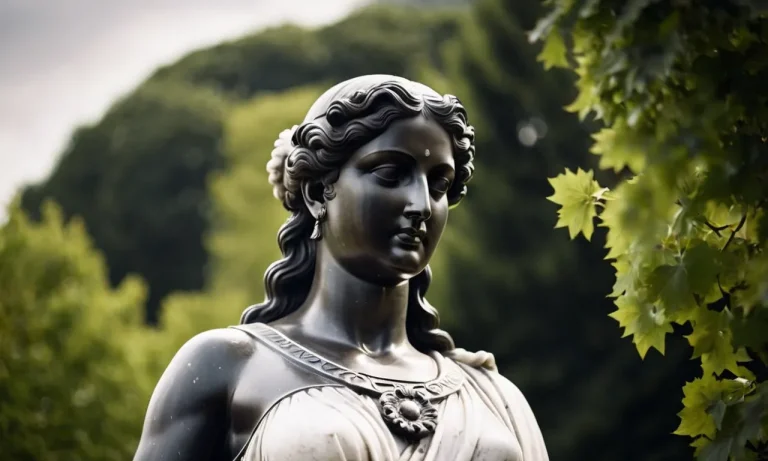What Came First – Catholicism Or Christianity?
The relationship between Catholicism and Christianity is complex, with debates surrounding which tradition is older or more authentic. This question – what came first, Catholicism or Christianity? – has been a source of controversy for centuries.
If you’re short on time, here’s a quick answer: Christianity as a religion predates Roman Catholicism. However, the Catholic Church considers itself the original and most ancient expression of the Christian faith.
In this extensive article, we will trace the origins of Christianity and Catholicism, examine the key differences that emerged, and analyze the arguments made by each side about which tradition came first historically.
With scholarly insights and factual timelines, we’ll leave readers equipped to grasp this central theological debate.
The Earliest Christians and Emergence of Key Beliefs
Understanding the origins of Catholicism requires delving into the early history of Christianity itself. The question of what came first – Catholicism or Christianity – is a complex one, as Catholicism is a branch of Christianity that emerged over time.
To gain insight into this, we must explore the earliest Christians and the development of key beliefs that eventually led to the formation of Catholicism.
Jesus Christ and the First Followers
The story of Catholicism begins with Jesus Christ and his teachings. Jesus, considered the central figure in Christianity, lived in the first century AD. He attracted a group of followers who believed he was the Son of God and the Messiah.
These first followers, known as disciples or apostles, played a crucial role in spreading the teachings of Jesus and laying the foundation for what would become Christianity.
During his ministry, Jesus preached about love, forgiveness, and the Kingdom of God. He performed miracles and taught his disciples through parables. His teachings emphasized the importance of faith, repentance, and living a righteous life.
The earliest Christians embraced these teachings and sought to share them with others, creating a community centered around Jesus’ message.
Persecution and Spread of the Faith
As the early Christian community grew, it faced persecution from both the Jewish religious authorities and the Roman Empire. The Roman Empire saw Christianity as a threat to its political and religious stability.
Despite this opposition, Christianity continued to spread, carried by devoted believers who were willing to face persecution and even martyrdom for their faith.
The apostle Paul, in particular, played a significant role in the spread of Christianity. He embarked on several missionary journeys, establishing Christian communities and writing letters to guide and instruct them.
Paul’s writings, which form a significant portion of the New Testament, helped shape the early Christian theology and played a crucial role in the emergence of key beliefs.
Early Church Councils and Establishment of Doctrine
As Christianity spread throughout the Roman Empire, different interpretations of Jesus’ teachings emerged. To address these variations and ensure the unity of the faith, early church councils were convened.
These councils brought together bishops and other church leaders to discuss and establish key doctrines and beliefs.
One of the most significant early church councils was the Council of Nicaea in 325 AD. This council addressed the issue of Arianism, a heretical belief that denied the divinity of Jesus Christ. The council affirmed the Nicene Creed, which declared Jesus as “true God from true God.”
The establishment of this creed helped solidify the belief in the divinity of Jesus and became a fundamental tenet of Catholicism.
Over time, as Christianity continued to develop and evolve, the Catholic Church emerged as a distinct branch. The term “Catholic” comes from the Greek word “katholikos,” meaning “universal.” The Catholic Church saw itself as the universal church, encompassing all believers in Christ.
It is important to note that while Catholicism is one branch of Christianity, there are other branches such as Eastern Orthodoxy and Protestantism. These branches have their own distinct histories and beliefs, but they all trace their origins back to the early Christians and the emergence of key beliefs that shaped the Christian faith.
The Growth and Formalization of Church Institutions
When exploring the origins of Catholicism and Christianity, it is important to understand the growth and formalization of church institutions. This process played a significant role in shaping the development of both Catholicism and Christianity as distinct entities.
Bishops of Rome gain prominence
One key aspect of this growth was the increasing prominence of the Bishops of Rome, who would later become known as the Popes. In the early centuries of Christianity, the Bishops of Rome gradually gained influence and authority within the church.
They were seen as successors to the Apostle Peter and became recognized as the highest authority in matters of faith and doctrine.
This gradual rise in prominence can be traced back to the writings of early church fathers such as Ignatius of Antioch and Irenaeus, who acknowledged the special role of the Bishop of Rome as a source of unity for the entire Christian community.
This recognition laid the foundation for the development of papal primacy.
Papal primacy takes shape
Papal primacy refers to the belief that the Bishop of Rome holds a special authority and jurisdiction over the entire Christian Church. This concept began to take shape in the 4th and 5th centuries, with the Councils of Nicaea and Constantinople affirming the authority of the Bishop of Rome as the successor of Peter.
Over time, this belief in papal primacy became more formalized and codified. The First Vatican Council in 1870 defined the Pope’s infallibility in matters of faith and morals, further solidifying his authority within the Catholic Church.
Canon law and structural hierarchy develop
As the church institutions grew and evolved, the need for a formalized system of laws and a clear structural hierarchy became apparent. This led to the development of canon law and the establishment of a hierarchical structure within the church.
Canon law refers to the body of laws and regulations governing the Catholic Church. It encompasses a wide range of topics, including the administration of sacraments, the role of clergy, and the handling of disputes.
The development of canon law helped to establish a standardized set of rules and procedures within the church, ensuring uniformity and consistency.
In parallel, the structural hierarchy of the church began to take shape. The Pope, as the Bishop of Rome, occupied the highest position of authority, followed by cardinals, bishops, priests, and deacons.
This hierarchical structure provided a clear framework for the governance and organization of the church.
Great Schisms and Birth of Protestantism
East-West Schism divides church geographically
The East-West Schism, also known as the Great Schism, occurred in 1054 AD and marked a significant split between the Eastern Orthodox Church and the Roman Catholic Church. This division was primarily fueled by theological and cultural differences, as well as political tensions between the East and West.
The schism resulted in the creation of two distinct branches of Christianity, with the Orthodox Church centered in the East and the Catholic Church centered in the West.
The East-West Schism had far-reaching consequences, not only from a religious standpoint but also in terms of geography. The split created a clear divide between Eastern and Western Europe, with the Orthodox Church dominating the former and the Catholic Church becoming the predominant Christian denomination in the latter.
This geographical divide would play a significant role in shaping the religious, cultural, and political landscape of Europe for centuries to come.
Reformation sparks Protestant traditions
In the 16th century, the Protestant Reformation, led by figures such as Martin Luther and John Calvin, emerged as a response to perceived corruption and doctrinal disputes within the Catholic Church. The Reformation challenged the authority and teachings of the Catholic Church, leading to the birth of various Protestant traditions.
Protestantism introduced several key theological beliefs, such as the doctrine of salvation by faith alone and the priesthood of all believers. This movement also emphasized the importance of individual interpretation of scripture and rejected certain Catholic practices, such as the veneration of saints and the authority of the Pope.
The Reformation sparked a wave of religious reform across Europe, resulting in the establishment of new Protestant denominations.
Wars and debates over authority ensue
The theological and ideological differences between Catholicism and Protestantism led to a series of conflicts and debates over religious authority. These disputes often resulted in violent clashes, such as the Thirty Years’ War in the 17th century, which devastated parts of Europe and left a lasting impact on its history.
Debates over authority also played a crucial role in shaping the religious landscape of Christianity. While the Catholic Church maintained its claim of being the one true Church, Protestant denominations emerged with their own interpretations of scripture and teachings.
This diversity of beliefs and practices within Christianity continues to exist today, with numerous Protestant denominations coexisting alongside the Catholic Church.
It is important to note that the division between Catholicism and Christianity is not a matter of one coming before the other. Catholicism is a branch of Christianity, and both have their roots in the teachings of Jesus Christ and the early Christian community.
However, the Great Schism and the Protestant Reformation were pivotal moments in the history of Christianity that shaped the development and diversity of the faith as we know it today.
The Catholic Perspective on Origins and Apostolic Succession
When it comes to the question of what came first – Catholicism or Christianity – the Catholic Church sees itself as the original church founded by Jesus Christ. According to Catholic doctrine, Jesus established the Church during his earthly ministry and appointed Peter as its first leader, giving him the keys to the kingdom of heaven (Matthew 16:18-19).
Therefore, the Catholic Church claims to have direct lineage from the earliest days of Christianity.
Sees itself as the original church founded by Jesus
The Catholic Church believes that it is the true and original Church founded by Jesus Christ. Catholics trace their roots back to the time of Jesus and the apostles, seeing themselves as the continuation of the early Christian community.
They view themselves as the custodians of the apostolic tradition and teachings, preserving the faith that was handed down from Jesus to his disciples.
According to Catholic belief, Jesus appointed Peter as the head of the Church (Matthew 16:18-19), and this leadership was passed down through an unbroken chain of succession, known as apostolic succession.
This means that each Pope is considered to be the successor of Peter, carrying on the authority and teachings of the first apostles.
Belief in unbroken chain of succession from Peter
One of the key beliefs of the Catholic Church is the unbroken chain of apostolic succession from Peter. Catholics believe that Peter was the first bishop of Rome and that his successors, the Popes, have continued to guide the Church through the centuries.
This belief in a continuous line of authority from Peter to the present-day Pope is seen as a sign of the Church’s unity and stability.
This unbroken chain of succession is important to Catholics because it ensures the continuity of the Church’s teachings and the validity of its sacraments. It is believed that the Pope, as the successor of Peter, has the authority to interpret Scripture, define doctrine, and guide the Church in matters of faith and morals.
Rejects Protestant claims of corruption from original teachings
The Catholic Church rejects the Protestant claims that it has deviated from the original teachings of Jesus and the apostles. While acknowledging that there have been periods of corruption and abuses within the Church, Catholics believe that these do not invalidate its claims to be the true Church founded by Jesus.
The Church sees itself as a living tradition that has the authority to interpret Scripture and develop doctrine over time. Catholics believe that the Holy Spirit guides the Church and protects it from teaching error, ensuring the continuity of its teachings and the preservation of the apostolic tradition.
The Protestant Perspective on the Early Church vs. Catholicism
Belief that Catholicism added non-Biblical traditions
The Protestant perspective on the early church versus Catholicism centers around the belief that Catholicism added non-Biblical traditions. Protestants argue that the Catholic Church developed certain practices and teachings that were not explicitly mentioned in the Bible.
These include the veneration of saints, the doctrine of purgatory, and the authority of the Pope. Protestants contend that these traditions were established over time and were not present in the early Christian church as described in the New Testament.
Claims early church more diverse than Roman church
Protestants also argue that the early Christian church was more diverse in its beliefs and practices than the Roman Catholic Church. They point to the existence of various Christian communities and sects in the first few centuries after the death of Jesus.
These communities held differing views on theology, worship, and church governance. Protestants believe that the Roman Catholic Church emerged as a dominant force in the fourth century and imposed a standardized version of Christianity that suppressed the diversity present in the early church.
Argues Catholicism emerged gradually from early traditions
The Protestant perspective acknowledges that early Christian traditions laid the foundation for the development of Catholicism. However, they argue that Catholicism emerged gradually from these early traditions and went through significant changes over time.
Protestants highlight the influence of Roman culture and politics on the formation of the Catholic Church, suggesting that it was shaped by external factors rather than being a direct continuation of the early Christian church described in the Bible.
Conclusion
In summary, while both sides make impassioned arguments, the evidence indicates Christianity as a faith predated Roman Catholicism as an institution. Yet Catholicism maintains it has preserved the original teachings and authority passed down from Jesus to Peter and the early Christian leaders.








